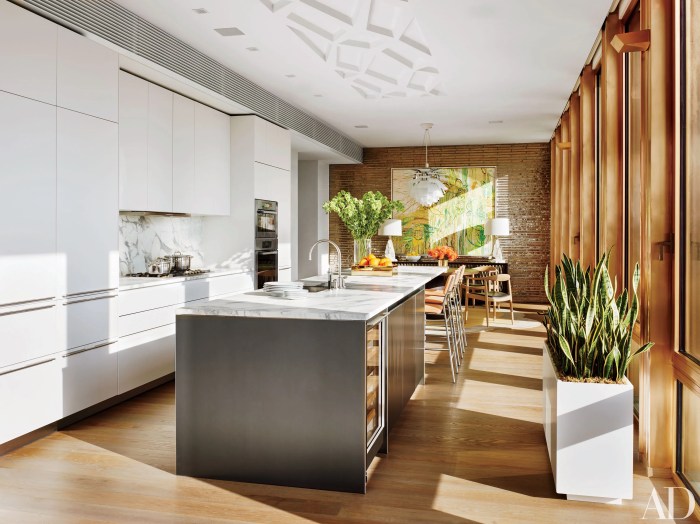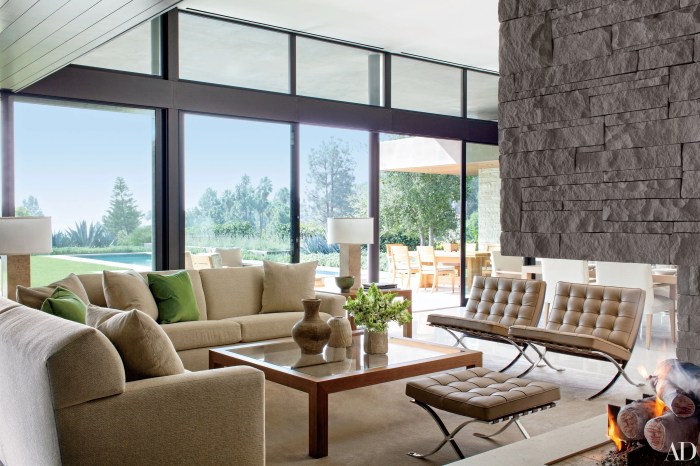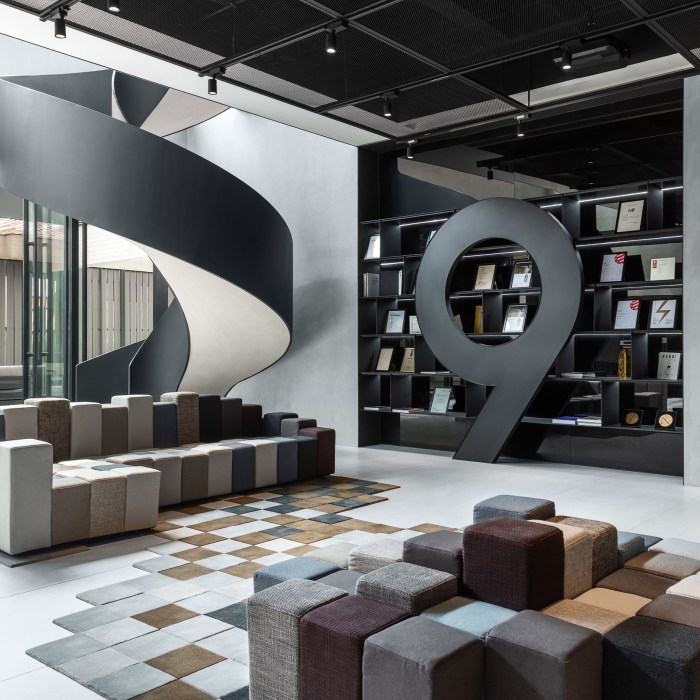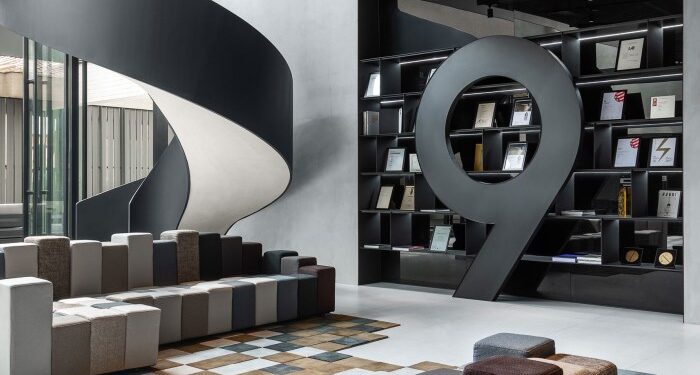Step into the realm of architectural interior design where creativity meets functionality, and innovation reigns supreme. From iconic projects to revolutionary technology, this topic delves into the heart of interior design like never before, promising a journey of discovery and inspiration.
Architectural interior design is a captivating blend of aesthetics and practicality, shaping the spaces we inhabit in profound ways.
Overview of Architectural Interior Design

Architectural interior design involves the planning, designing, and furnishing of interior spaces in buildings. It plays a crucial role in enhancing the functionality, aesthetic appeal, and overall experience of a space. Interior design is an integral part of architecture, focusing on creating harmonious and functional interiors that complement the building's overall design.The key elements that make up architectural interior design include spatial planning, lighting, color schemes, materials selection, furniture design, and decorative elements.
These elements work together to create a cohesive and visually appealing interior space that meets the needs and preferences of the occupants.
Examples of Famous Architectural Interior Design Projects
Some famous architectural interior design projects that have made a significant impact on the industry include:
- The Guggenheim Museum in Bilbao, Spain, designed by Frank Gehry, known for its innovative use of materials and organic forms.
- The Louvre Pyramid in Paris, France, designed by I.M. Pei, which transformed the museum's entrance with a modern and striking glass pyramid.
- The Fallingwater house in Pennsylvania, USA, designed by Frank Lloyd Wright, known for its integration with nature and innovative use of cantilevered construction.
These projects showcase the importance of architectural interior design in creating memorable and impactful spaces that inspire and delight those who experience them.
Principles of Architectural Interior Design
In architectural interior design, several key principles are essential to creating spaces that are both functional and aesthetically pleasing. These principles include balance, harmony, rhythm, emphasis, and unity.Balance:Balance in interior design refers to the equal distribution of visual weight in a space.
This can be achieved through symmetrical or asymmetrical arrangements of furniture, colors, and textures. For example, a room with a large, bold piece of furniture on one side may be balanced by several smaller, more delicate pieces on the other side.Harmony:Harmony involves bringing together various elements in a space to create a cohesive and pleasing whole.
This can be achieved through the use of complementary colors, materials, and styles. For instance, a room with a neutral color palette and natural materials like wood and stone can create a sense of harmony.Rhythm:Rhythm in interior design refers to the visual flow and movement within a space.
This can be achieved through repetition of elements like patterns, colors, or shapes. For example, a room with a repeated geometric pattern on the wallpaper, rug, and throw pillows creates a sense of rhythm.Emphasis:Emphasis is about creating a focal point in a space to draw attention and create visual interest.
This can be achieved through a statement piece of furniture, a bold accent wall, or a unique lighting fixture. For instance, a room with a dramatic chandelier hanging in the center can create a strong emphasis point.Unity:Unity in interior design is about ensuring that all elements in a space work together harmoniously.
This can be achieved through consistent use of a color palette, style, or theme throughout the space. For example, a room with a cohesive color scheme of blues and whites, along with nautical-themed decor, creates a sense of unity.These principles work together to create interior spaces that are not only visually appealing but also functional and comfortable for those who inhabit them.
Role of Technology in Architectural Interior Design

Technology plays a crucial role in transforming the landscape of architectural interior design, providing designers with innovative tools and techniques to enhance their creativity and efficiency. From 3D modeling and virtual reality to advanced design software, technology has revolutionized the design process and greatly improved visualization for both designers and clients.
3D Modeling and Visualization
D modeling software allows designers to create detailed and realistic representations of interior spaces before any physical construction takes place. By visualizing the design in a three-dimensional space, designers can make informed decisions about layout, materials, and lighting, leading to more accurate and impactful designs.
Virtual Reality Integration
Virtual reality (VR) technology enables designers and clients to experience the proposed interior design in a fully immersive way. By putting on a VR headset, users can walk through the virtual space, gaining a sense of scale, proportion, and ambiance that traditional two-dimensional drawings cannot provide.
This technology enhances communication between designers and clients, ensuring that everyone is on the same page regarding the design concept.
Advanced Design Software
The use of advanced design software, such as computer-aided design (CAD) programs, allows designers to streamline the design process and collaborate more effectively with other professionals involved in the project. These tools enable designers to create detailed plans, customize materials, and experiment with different design elements quickly and efficiently.
Examples of Innovation
Innovative technological applications in architectural interior design include the use of parametric design software to generate complex geometries, the integration of artificial intelligence for data analysis and design optimization, and the development of interactive touchscreen displays for real-time design adjustments.
These advancements push the boundaries of traditional design practices, opening up new possibilities for creating unique and sustainable interior spaces.
Sustainable Practices in Architectural Interior Design

Sustainable design practices play a crucial role in architectural interior design as they focus on minimizing the negative impact on the environment, promoting energy efficiency, and reducing waste.
Importance of Sustainable Design Practices
Implementing sustainable design practices in architectural interior design is essential for environmental conservation. By using eco-friendly materials, energy-efficient systems, and green building certifications, designers can contribute to reducing carbon footprint and creating healthier indoor spaces.
Eco-Friendly Materials
- Utilizing reclaimed wood, bamboo, cork, and recycled materials in furniture and finishes.
- Choosing low-VOC paints and finishes to improve indoor air quality.
- Opting for sustainable textiles made from organic fibers like hemp, linen, or organic cotton.
Energy-Efficient Systems
- Installing LED lighting fixtures and sensors to reduce energy consumption.
- Incorporating smart thermostats and HVAC systems for better control and efficiency.
- Utilizing natural ventilation and daylighting strategies to decrease reliance on artificial lighting and heating.
Green Building Certifications
- Seeking certifications like LEED (Leadership in Energy and Environmental Design) or WELL Building Standard to validate sustainable design practices.
- Following guidelines for sustainable construction and operation of interior spaces to achieve certification.
- Showcasing commitment to environmental stewardship and occupant well-being through certified projects.
Examples of Sustainable Architectural Interior Design Projects
One notable example is the Bullitt Center in Seattle, known as the greenest commercial building in the world. It features rainwater harvesting, solar panels, and composting toilets, significantly reducing its environmental impact. Another project is the Edge in Amsterdam, a smart and sustainable office building with energy-efficient systems, green roofs, and a focus on employee well-being.
Outcome Summary
As we conclude this exploration of architectural interior design, we are reminded of its transformative power in shaping our environment. From sustainable practices to technological advancements, the future of interior design holds endless possibilities for creating spaces that inspire and uplift.
FAQ Section
What are the key elements of architectural interior design?
The key elements include space, light, form, texture, color, and furniture arrangement.
How does technology impact architectural interior design?
Technology has revolutionized the design process by enhancing visualization through tools like 3D modeling and virtual reality.
Why is sustainable design important in architectural interior design?
Sustainable design is crucial for environmental conservation, promoting eco-friendly materials and energy-efficient systems.
Can you provide examples of famous architectural interior design projects?
Projects like the Sydney Opera House and Fallingwater are iconic examples of architectural interior design.














